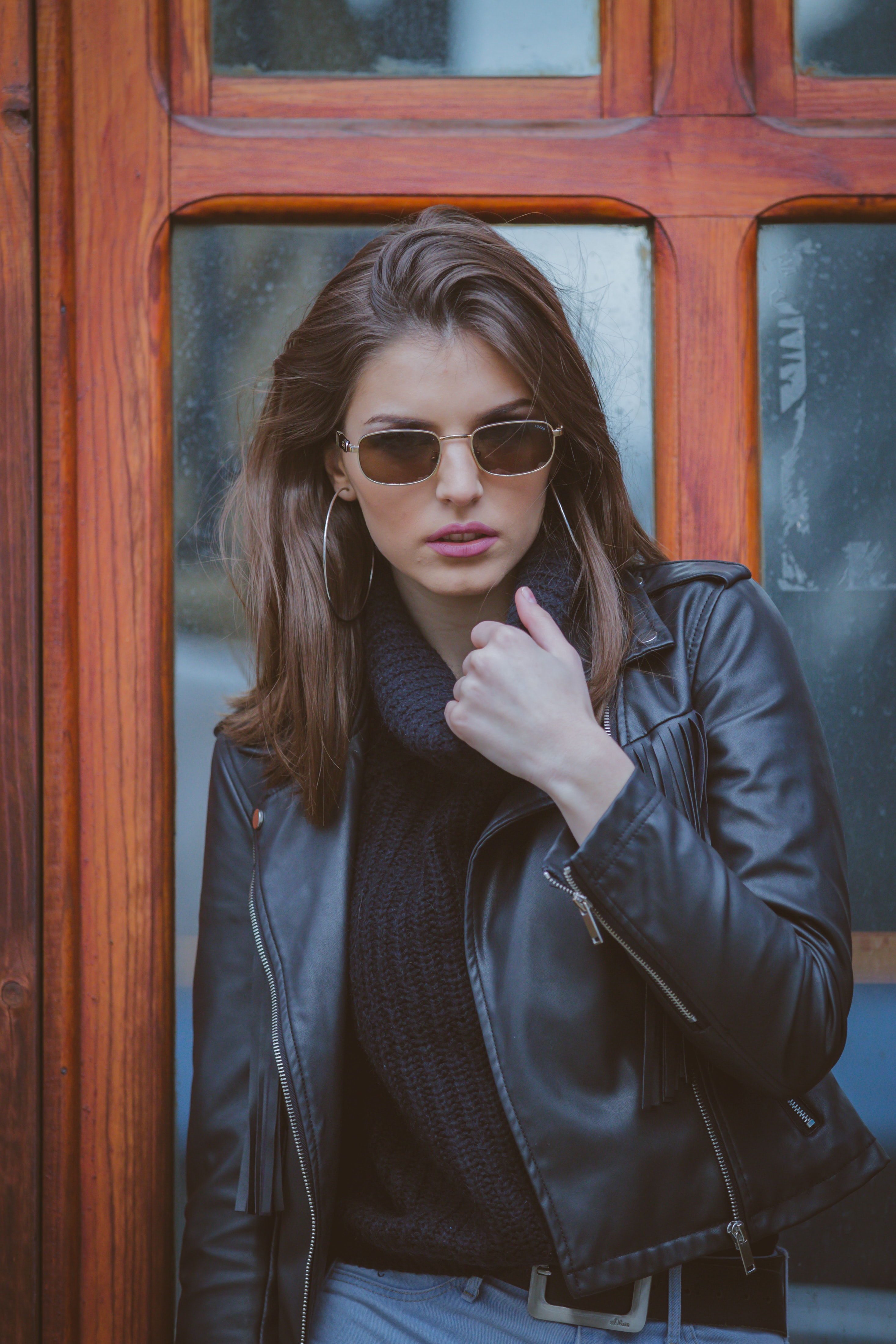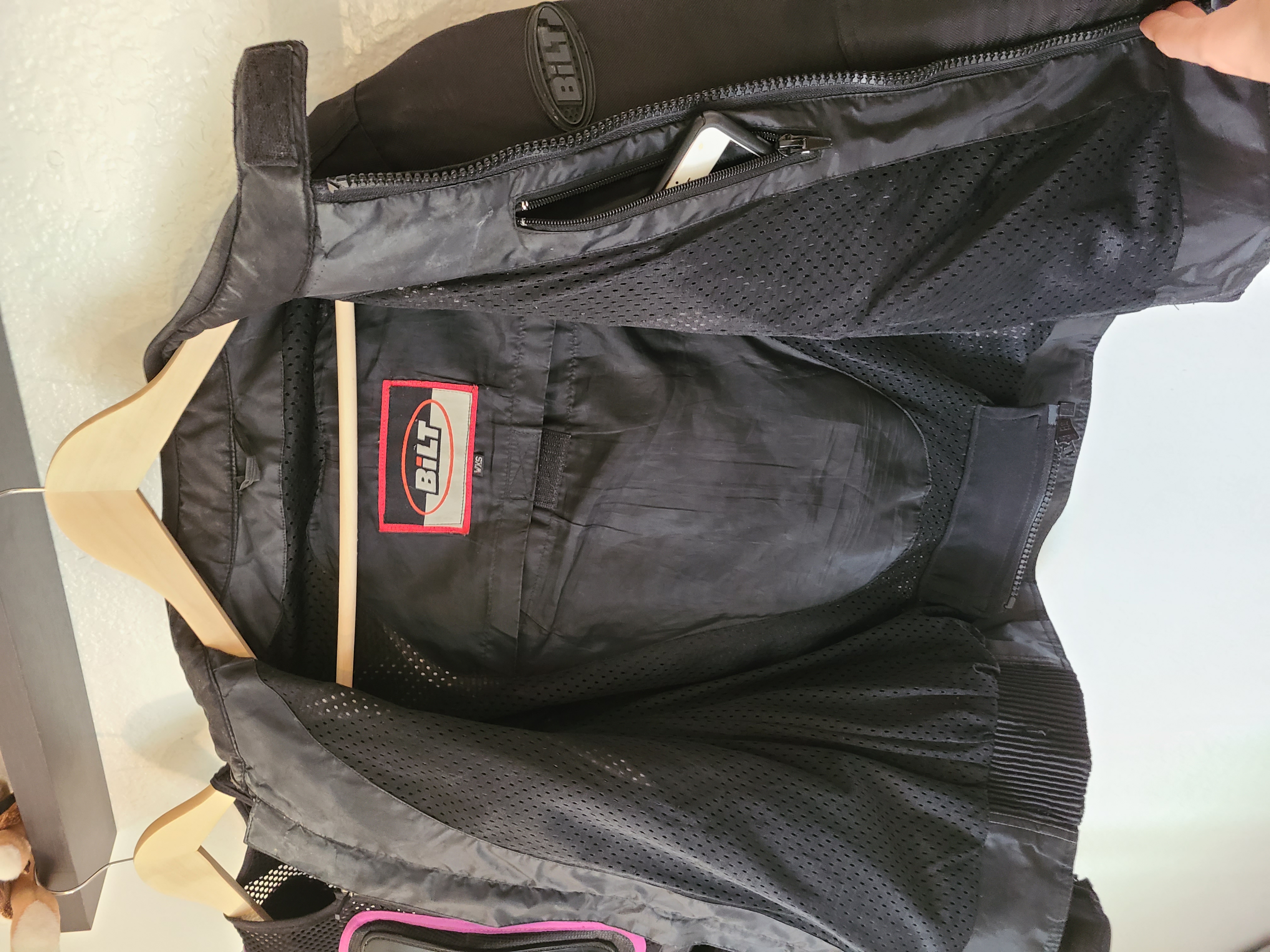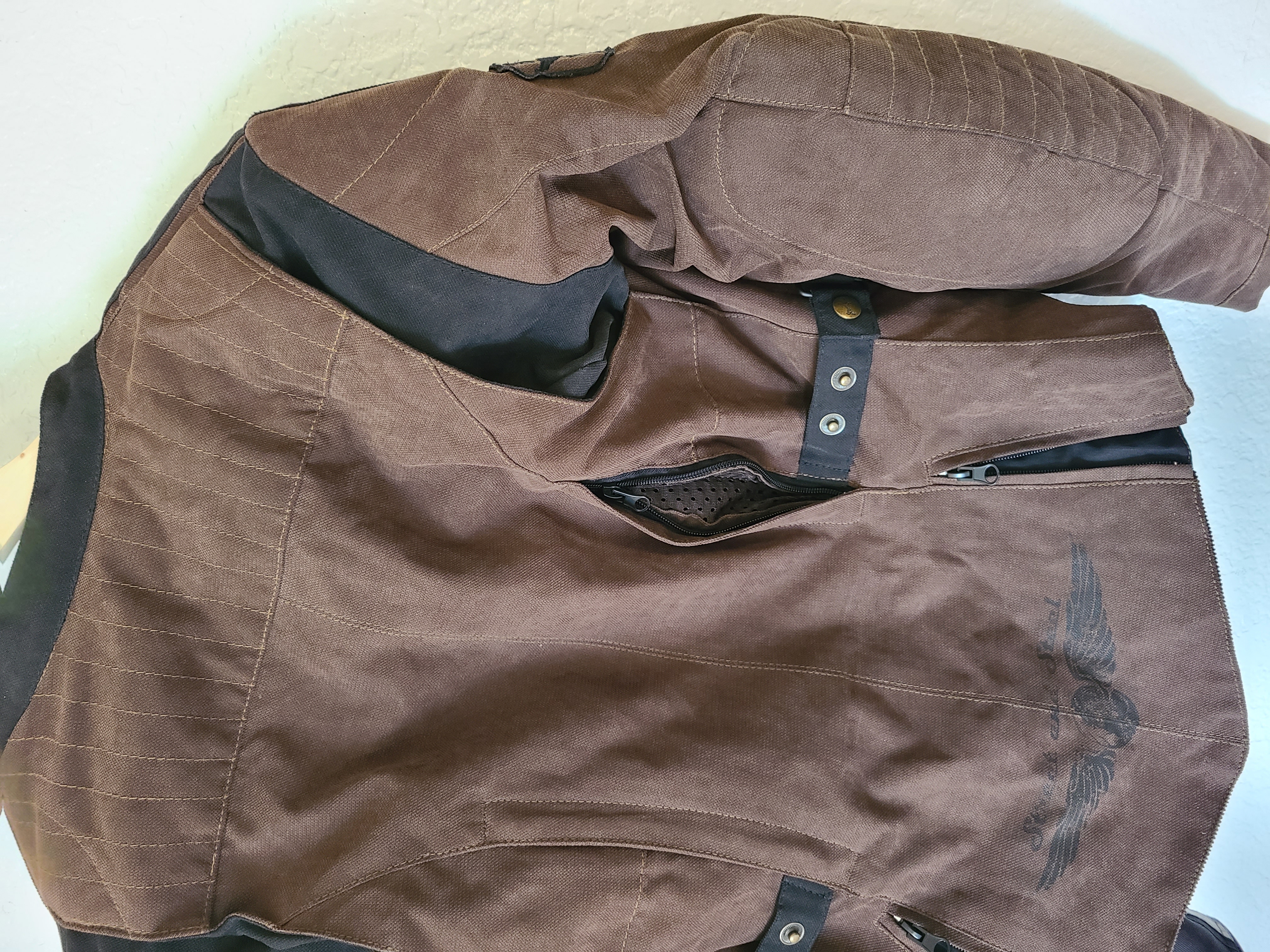Buying Guide: Motorcycle Jackets
Jackets tend to be the next piece of gear everyone thinks of after helmets, and come in a wide variety of styles, materials, and prices. Read on to learn what to look for when buying a jacket to wear on your motorcycle or scooter.
Motorcycle Jacket Golden Rules:
1) Choose an appropriate material: leather, mesh, or waxed cotton (never pleather!)
2) Demand CE armor in the elbows and shoulders, and a pocket for a CE-rated back protector
3) Check that the fit is snug enough to keep the armor in place in the event of a crash
Step 1) Choose the Material
Most jackets are good at one of three things: staying warm, staying cool, or staying dry. Consider the conditions you expect to ride in and decide which of these is most important to you.
- Perforated leather is good for staying cool, but is not good in rain. This is normal leather with a grid of small holes to let air through. It ventilates well while you’re moving, but doesn’t ventilate well when you’re stopped. Water may stain the leather, so they’re not recommended in rain. A good choice in hot, dry places.
- Non-perforated leather is good for staying warm, but is not good in rain. Most people consider leather to be a good all-season jacket material, but if you live somewhere hot and/or humid, you may find it too warm. Water may stain the leather, so they’re not recommended in rain. A good choice in temperate, dry places.
- Waxed cotton is good for staying warm, and offers light protection against rain. Overall waxed cotton jackets tend to be warmer than leather jackets due to how much thicker the material is, but this will vary between jackets. Waxed cotton does well in rain until the water soaks through, and water won’t harm the jacket. A good choice in temperate places.
- Mesh jackets are good for staying cool, but offer almost no protection against rain. These jackets are made from synthetic materials that are tested to withstand sliding in the case of a crash, and are also very breathable. Water passes through them almost as easily as air, so they offer virtually no protection against rain. A good choice in hot places, especially hot and dry places.
- Other materials include Kevlar, SuperFabric, Cordura, vegan leathers, and many more. Most of these materials will be similar to waxed cotton in breathability but offer various levels of waterproofing.
For hard rain, you’ll likely need a touring jacket that was made for rainy conditions. These tend to work well in cool, rainy places, but are often too warm for hot, rainy places. Another option is to layer a standard rain jacket over your motorcycle jacket.
One thing you definitely don’t want in a motorcycle jacket is most any kind of “pleather,” usually a polyester or PVC. On top of its lack of breathability and durability, polyester can melt when it gets too hot. This means that in a crash, the friction from  sliding across asphalt can melt your jacket to your skin-yikes! Motorcycle gear manufacturers know this and use safe materials to make their products, but this is a very good reason to stay away from cheaper “fashion” moto jackets, which may look like motorcycle gear but offer none of the protection.
sliding across asphalt can melt your jacket to your skin-yikes! Motorcycle gear manufacturers know this and use safe materials to make their products, but this is a very good reason to stay away from cheaper “fashion” moto jackets, which may look like motorcycle gear but offer none of the protection.

Step 2) Shop Online for Options
Now that you know what material you want your next jacket to be, it’s time to start shopping! For most women, there won’t be a motorcycle store nearby with much women’s gear in stock, so it’s helpful to check online and start making a list of your favorites. If you are lucky enough to live near a shop, you may still find it helpful as most stores have a larger selection available online than in store, and typically accept in store returns for things bought online. Brands with good women’s selections include AlpineStars, Dainese, Rev’it, Bilt, and Joe Rocket, though there are many others.
Here are some common features you might look for in a jacket:
- Airbags: Just like in your car, you can now have an airbag on your motorcycle. Motorcycle airbags started off in professional racing, but are now available even in everyday jackets. Some are sold as an independent vest that goes on over or under the jacket, while others like AlpineStars are an integrated system. Be sure to check that your airbag will be compatible with your new jacket.
- Fit adjustors: These are typically buckles at the waist, snaps at the neck, or vertical zippers at the hips, all of which help you customize the fit of your jacket. Flaps at the neck can be especially irritating to your skin, so it’s very nice to have a way to keep them in place.
- Heaters: While most electric heaters are sold as a vest to wear under a jacket, some jackets have electric heaters built into them. Heating panels at the neck are especially nice.
- Pockets: Women’s jackets are notoriously low on pocket space, but motorcycle jackets tend to have more of them. In addition to the common handwarmer pockets, many jackets will have a small credit card pocket on the sleeve, or a larger phone-sized pocket in the lining of the jacket. When it comes to pockets, the more, the merrier!
- Pre-curved arms: Jackets made for sport and track riding are often made with a curve already built into the arms, as opposed to letting the arms hang straight down at the sides. This helps prevent excess material when you’re tucked in on a sport bike, but may be uncomfortable if you’re on a cruiser.
- Thermal liner: Many jackets will come with a zip-in thermal liner to extend their use into colder days. Most thermal liners are a vest only but some also come with full sleeves.
- Ventilation: While mesh and perforated leather jackets provide the best ventilation, there are other ways to create airflow in a jacket. Vertical back vents will let air flow from your neck and gloves all the way around your back, and some jackets have ventilation built into stretch panels at the sides and arms.
- Zippers: Zippers are a common point of failure on jackets, so make sure that the hardware is sturdy and large enough to grab with gloved hands. Check that your jacket has wrist zippers too to make it easy to get into and out of, since your jacket’s forearms will be more tapered than a fashion jacket. Another nice touch is zippers that open upward, so they’re less likely to get snagged on something or otherwise open accidentally. Last, look for an off-center front zipper for a classic moto jacket vibe and to protect your tank from scratches.



Step 3) Narrow Down Your Choices
Once you have a short list of favorites, check each one to make sure it has real protection. That means CE-rated armor in the elbows and shoulders, and a pocket for a CE-rated back protector. Most jackets will cost $200-$500, and for that price you deserve real, reliable protection. Under the old EN13595 regulations, gear could be certified as CE Level 1 or 2, with CE Level 2 being the safest. The new EN17092 regulations have 5 safety categories ranging from AAA to C, with AAA being the safest. Level A is deemed generally suitable for urban riding, while heavier and bulkier Level AA and AAA gear are typically seen on touring and track or racing gear.
While you’re researching safety, you may come across reviews that will give you an idea of what the fit will be like. If you already own an item from the same brand it’s usually easier to guess your size. In general, European brands like Dainese and Alpinestars have a longer, slimmer cut, while American brands like Joe Rocket and Olympia have a fuller cut. If you do have a local motorcycle shop this is a great time to go in and try on various items from different brands to get a feel for their different sizing.
Step 4) Pick a Size and Order!
By now, you’ll have narrowed down your list to just a few candidates based on materials, protection, and sizing, so it’s time to pick your favorite and order! If this is your first time buying from the brand make sure to pay close attention to the shipping terms of the seller in case you need to return it. If you live in a city with a motorcycle shop, see if you can order gear online and return it in store if necessary. To get the most accurate numbers, be sure to ask a friend for help with taking your measurements and use a tailor’s measuring tape-while you can use a string and a ruler, strings tend to stretch and give inaccurate measurements.
Once you’ve received your jacket, try it on in the mirror and make sure you love it. Put a back protector in the pocket to make sure the fit feels right, and have a friend twist the elbows and make sure the armor can’t rotate off your elbow. Then, put on your riding gloves and head to the garage to try out the jacket on your bike. Sport bikes, cruisers, touring bikes, etc., can have very different ergonomics, and you may find material bunching up in places it shouldn’t. Put your hands on the bars and check whether the jacket is comfortable in the riding position. With leather, you can expect your jacket to break in about half a size, but overall it should feel comfortable from day 1.
Step 5) Keep it or Try Again
Are you smiling? If your new jacket is everything you thought it would be, then congratulations, you found your new favorite! If it’s not quite the right fit or color though, or the style looks different from how it did online, don’t hesitate to take it back and try another option. While it’s annoying to start over, you’ll use what you learned about this jacket to find a better fit with the brand the next time you order something from them.

